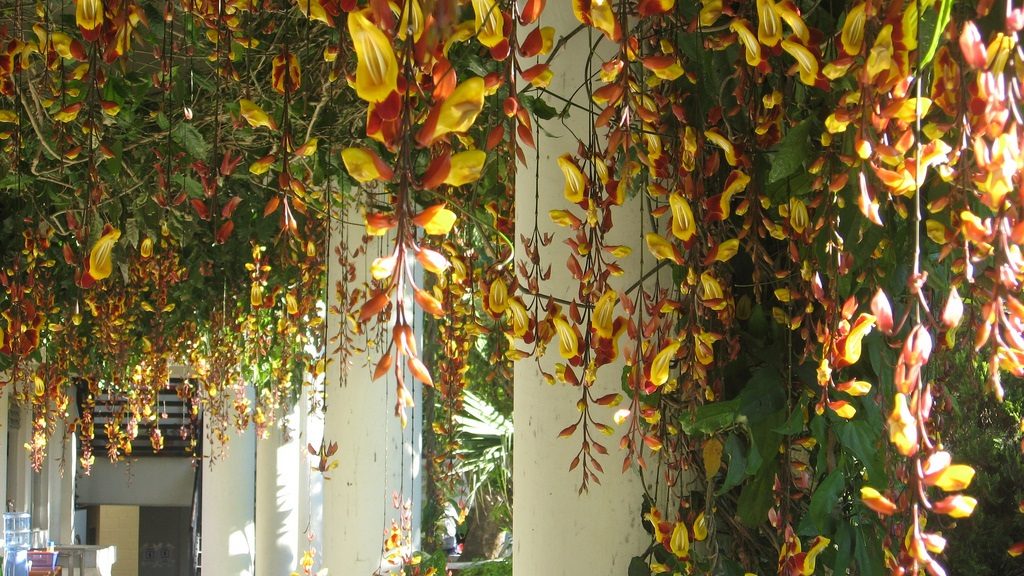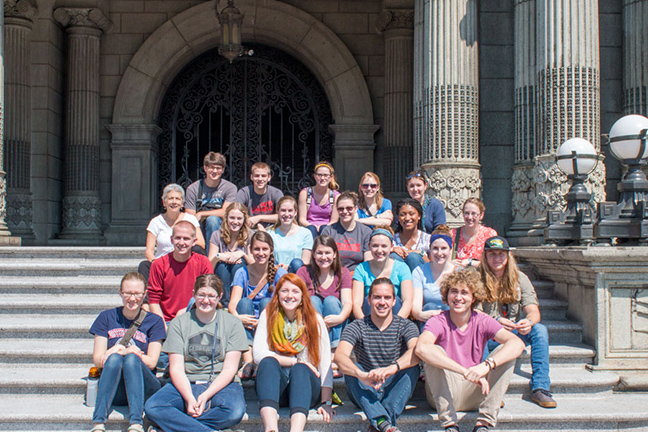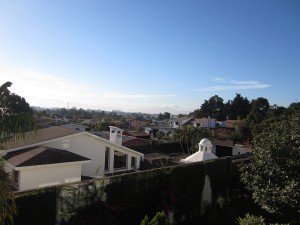We recently spent 10 days living in communities around Guatemala and serving with organizations in those communities. Keep reading to hear about where each group went.
We (Marie & Sophia) spent the week in Santiago, Atitlan working with Amanecer Nueva de Santiago Atitlan (ANADESA). This organization focuses on helping empower indigenous women, as well as supporting children with their educational needs. Something that stood out to us were home visits. They were check-ins to assess what the children’s needs were & how they could help. This truly demonstrated how this organization & these kind people are helping & caring for their community. We truly enjoyed working with Jessica, Víctor, Chonita & the many students with whom we had the opportunity to work. Gracias por todo!
We (Miranda and Maria) spent the week living in Santiago Atitlan working with ADISA, an organization that works primarily with individuals with disabilities and their families, though their reach extends far beyond that. They have four main arms of work: social empowerment, economic empowerment, education, and health services. I (Maria) spent the week in the health clinic, doing home visits and appointments with the physical therapist. It shed a light on the realities of Guatemalan healthcare especially in rural areas. The work ADISA is doing fills some of the gaps, but they can only do so much and ultimately change must be systemic. I (Miranda) spent the week working with education, specially with “grupos inclusivos” (inclusive groups) that work to build social connections between kids and reinforce what they’re learning in school. We took the classes to different communities and it was super impactful for me to see the reality of these communities. A main theme that dominated the week was seeing a very different Guatemalan reality than we had seen in the city. We were able to experience firsthand the differences between rural and urban Guatemala.
– Miranda Beidler
For community learning, Leah, Josh, and I volunteered with AMI, an organization located in San Juan Laguna. AMI is a multifaceted organization that includes a medical clinical, agricultural education, and various other community programs. For the majority of the time, our work was focused on the clinic. At the clinic, we did inventory for many medicines and other products. We also helped build office items. We were grateful to aid the clinic as it was starting up, and to contribute to the broader mission of AMI. We also spent two days in neighboring communities, recording information for a socioeconomic study of one of the programs for women, as well as observing a worker educating families on farming and composting. This person-to-person interaction was very meaningful, as we were able to see how AMI has and continues to positively impact the nearby communities. Overall, it was impactful to serve the community in the area we hope to work with in the future.
For community learning Nate and I were living and volunteering in Alta Verapaz at Community Cloud Forest Conservation (CCFC). As a group, we visited CCFC earlier this semester and learned about the conservation work that they do. Nate and I were excited to return for community learning! We arrived on Sunday afternoon and Monday morning we participated in the large team meeting with the team of Women in Agroecology Leadership for Conservation (WALC) teachers. During our time at CCFC earlier this semester we had been paired with the WALC teachers, and I was grateful that we were able to work with familiar faces and continued to deepen our relationships with the teachers.
Our days began early at 7:00 am, and we pitched in wherever they needed us, some days this meant picking blackberries or clearing fields with machetes, other days this was helping in the kitchen preparing jams and breads. We had the afternoons and evenings to explore the CCFC property and took advantage of the trails and river that run through the land.
We had the opportunity to hike up to a local village with a small group of teachers to learn about rotational grazing. We hiked on the mountainside and had the opportunity to experience the vast biodiversity of the cloud forest. We learned about the local flora and birds, we spotted the emerald toucanet which, when flying, looks like a banana followed by a green bird. In the village, we had a tour of the land, and felt the temperature difference between the land that was completely cleared for monoculture crops, and the land that implemented rotational grazing. We have learned about rotational grazing in our environmental science classes at EMU, and we enjoyed seeing it in practice.
On our last day of work a group from Lanquín came to perform a Mayan ceremony in the cave. We had the privilege of joining the group. The ceremony was a celebration of the relationship between the land and the people. During the hike to the cave, we stopped at various points where members of the group stopped to feel the moss and kiss the rocks, this intentionally reminded me just how intertwined humans and the land are. Once we arrived at the cave we were offered tamales and welcomed to observe the ceremony, which included music and prayers. We were thankful to be welcomed into a sacred space and ceremony.
As I write we are on our way back via bus through the Guatemalan countryside. We are physically tired from our work, but a week and a half of living, working, and learning in the cloud forest has recharged us spiritually and mentally for the last few weeks of this semester.
-Ally Welty Peachey
Eli Ours and I spent out community engagement week with an organization called Utz K’aslimmal, which is focused on community development and preserving traditional practices for farming and construction. We also spent a portion of our time assisting with and learning from a local community school geared towards reinforcing what the children learn in the national school system and working with local women. Our main learning from our ten days there in Santiago was to remember that all grand measures of progress must begin with small-scale change, and that the work we do on an individual level absolutely does matter. The other highlight of our trip was the opportunity to see a quetzal, the national bird of Guatemala. Quetzales are rare birds, symbolic of freedom and hope for the Guatemalan people because it is impossible to keep them in captivity. The gorgeous birds absolutely lived up to their reputation as the jewels of the Guatemalan highlands, and we could not have been more excited to have the opportunity to see one in person.
– Lane Burkholder

Ella and I spent our 10 days in Colotenango with Association Pop No’j. Pop No’j has four programs: migration, women, youth, and land. We worked most with the migration team. We spent about half our days in the office and the other half visiting nearby villages. When we were in the office, we helped prepare materials for future activities, observed visits with families, and sat in on meetings. When we were out of the office, we saw Pop No’j’s outreach process, met with another organization that does similar work with women, and helped with one of their workshops at a nearby school. One of the biggest learnings from our time here was how much migration impacts every person here.
– Kate Krabill
Arelys and I spent time in Jacaltenango working with Pop Noj. Pop Noj works with people who have returned from the US after migrating, providing psycho-social support as they adapt to Guatemalan culture. We spent time educating schools, groups of women, and visiting homes in the highland neighborhoods handing out pamphlets about the organization. Some important learnings that we took away were the complexities of immigrating as people of indigenous communities and reconciling with how common the migration conversation is for kids.
– Hollyn Miller
Mana and Naomi spent a week in Carchá
working with ODIGUA and the families they saw,
Every morning they arrived at work at eight,
sorting seeds and visiting villages—work they appreciate!
After a long day at work and needing a break,
they went home to their big family and danced, played, and ate.
They learned some Q’eqchi and about their family’s past,
especially about what gave them enough strength to last.
That family death and poverty pushed them away,
but steady job offers and a strong community made them stay
They got to see a lot of chickens and babies too,
but other days they counted seeds the whole day through!
And although they got tired of locked bathrooms at night,
the fun kids and banter kept them feeling alright.
Thank you Carchá for such a fun week—
We wish you the best, and ‘till next time, Quan Chic!
-Mariana Acosta































